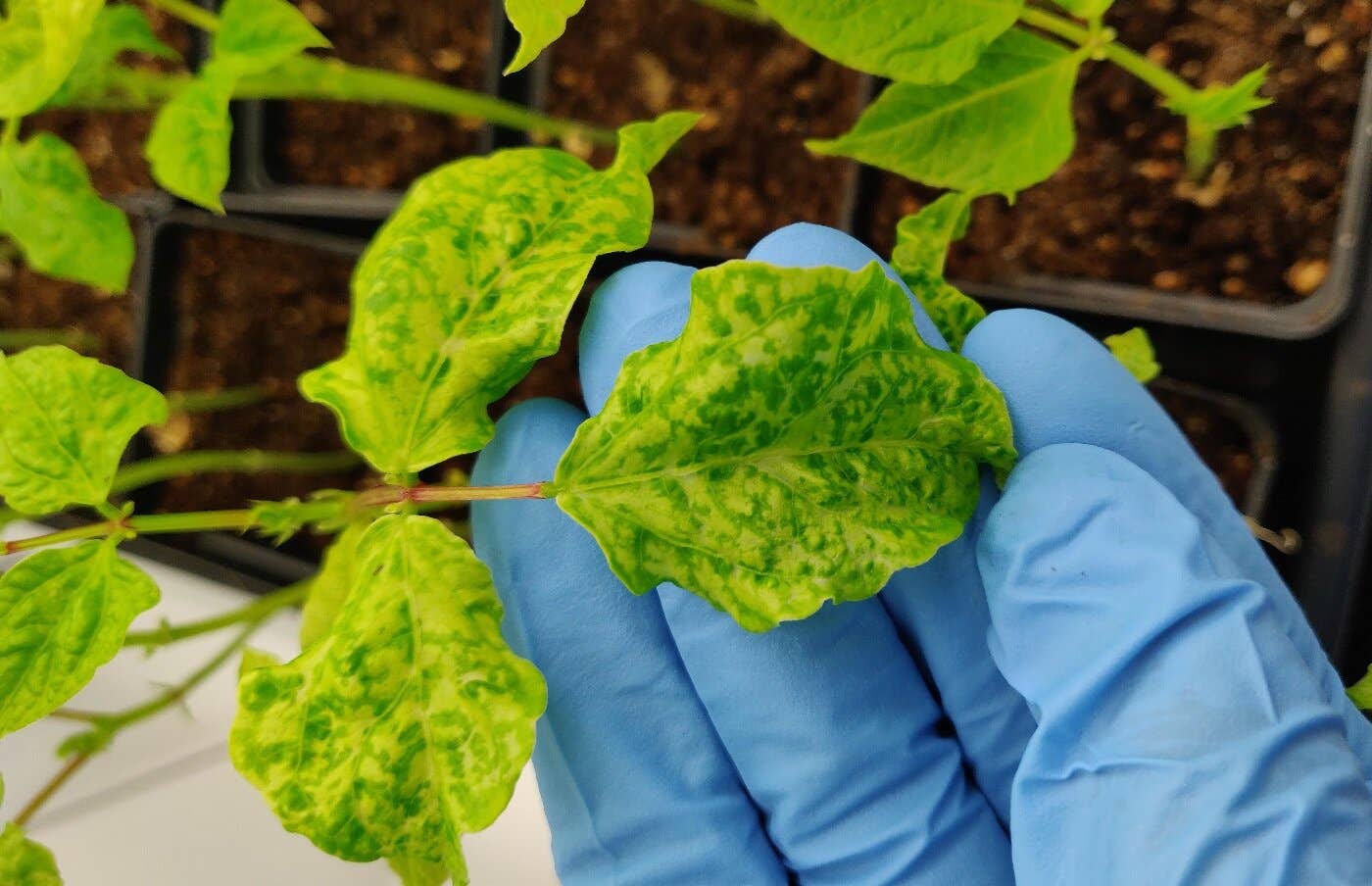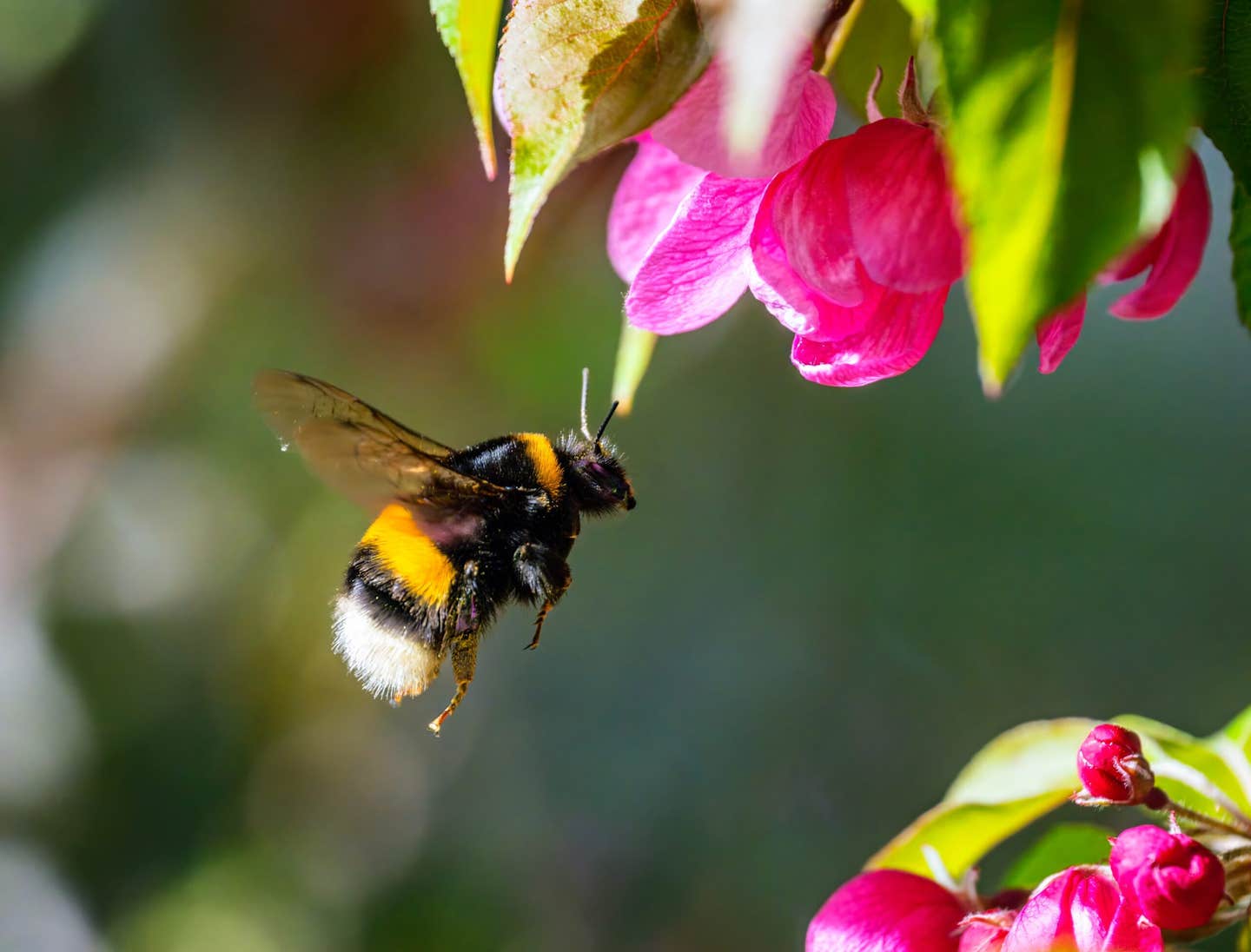Common plant virus shows stunning results in targeting and destroying cancer cells
A virus from black-eyed peas may become a breakthrough cancer therapy, training the immune system to destroy tumors at low cost.

A plant virus that infects peas may offer an affordable new cancer immunotherapy by reprogramming immune cells. (CREDIT: UCSD)
A common plant virus once known only for infecting black-eyed peas is now taking center stage in cancer research. This virus, known as cowpea mosaic virus or CPMV, is being studied as a promising, affordable immunotherapy that could help fight cancer in humans. Scientists are beginning to understand how it works—and why it works so well.
A team of chemical and nano engineers at the UC San Diego recently explored the virus’s powerful immune-activating abilities. Their findings, published in Cell Biomaterials, show that CPMV stands apart from other plant viruses in how it triggers the human immune system to attack cancer cells. The virus doesn’t infect human cells, yet it somehow teaches the immune system to fight tumors.
How a Plant Virus Trains the Immune System
The researchers tested CPMV in mice and even in pet dogs with cancer. In both cases, the results were striking. When they injected the virus directly into tumors, it called in an army of immune cells—neutrophils, macrophages, and natural killer cells. These cells surrounded and destroyed the tumor.
At the same time, the virus activated B cells and T cells, which are essential for long-term immune memory. This means the immune system didn’t just attack the injected tumor. It also remembered the threat and searched the body for other cancer cells to destroy, including those in distant locations.
“It is fascinating that CPMV but not other plant viruses stimulates an anti-tumor response,” said Nicole Steinmetz, the lead researcher on the study and a professor at UC San Diego’s Jacobs School of Engineering. Steinmetz also holds the Leo and Trude Szilard Chancellor's Endowed Chair. Her lab has spent years studying how viruses can be retooled for medicine. In this study, they worked closely with the National Cancer Institute’s Nanotechnology Characterization Laboratory to dig deeper into how CPMV affects human immune cells.
A Surprising Response Inside Human Cells
To uncover what makes CPMV special, researchers compared it with another virus called cowpea chlorotic mottle virus (CCMV). These two plant viruses are very similar in size and shape. Both are taken up by human immune cells at the same rate. But the effects inside the cell couldn’t be more different.
Related Stories
- Two FDA-approved cancer drugs significantly reverse Alzheimer’s disease
- Breakthrough blood test detects colon cancer early with 95% accuracy
CPMV caused human immune cells to switch into a more alert and active state. “What we found most exciting is that although human immune cells are not infected by CPMV, they respond to it and are reprogrammed towards an activated state, which ultimately trains them to detect and eradicate cancerous cells,” said Anthony Omole, the first author of the study and a Ph.D. student in Steinmetz’s lab.
What’s going on inside the cell makes all the difference. CPMV sparks the production of interferons—specifically type I, II, and III. These are powerful signaling proteins with long histories in cancer therapy. In fact, some of the first cancer immunotherapy drugs were synthetic versions of interferons. They work by turning immune cells into aggressive cancer hunters.
In contrast, CCMV doesn’t do this. Instead, it causes the release of inflammatory interleukins, which lead to a general immune reaction but not one focused on tumors. Another major difference lies in how the virus’s RNA behaves. RNA is the molecule that carries instructions inside cells. In the case of CPMV, its RNA lasts longer and ends up in a part of the cell called the endolysosome. That’s where toll-like receptor 7 (TLR7) gets activated.
TLR7 is important for detecting viruses and triggering a strong antiviral response. It also plays a key role in attacking tumors. When CPMV activates this receptor, it sends immune cells into high gear. CCMV, however, doesn’t reach this part of the cell. Its RNA breaks down too quickly, so TLR7 never gets the signal.
A Low-Cost Path Toward Clinical Trials
Another major advantage of CPMV is how easy it is to produce. Many cancer immunotherapies are made with complex, expensive lab techniques. But CPMV can be grown using a simple process called molecular farming. “It can be grown in plants using sunlight, soil and water,” Omole said. This makes CPMV a rare type of treatment—one that’s both powerful and low-cost.
Because of this, researchers are hopeful that CPMV could become an accessible option for patients around the world. It doesn’t rely on synthetic chemicals or advanced manufacturing. Instead, it can be farmed just like any other crop, purified, and prepared for treatment.
What’s Next for CPMV Therapy?
Though CPMV hasn’t yet been tested in human clinical trials, researchers are confident that day is coming soon. Their goal now is to find the strongest and safest version of the virus for use in people.
“The present study provides important insights into the mechanism of action of CPMV. We are diligently working toward the next steps to ensure that the most potent lead candidate is selected to achieve anti-tumor efficacy and safety,” Steinmetz said. “This is the time and we are poised to move this work beyond the bench and toward clinical trials.”
What makes this discovery especially exciting is that it turns something as ordinary as a plant virus into a powerful weapon against cancer. Scientists still have more work ahead to fully unlock its potential. But for now, CPMV stands out as one of the most promising and practical cancer immunotherapies in development today.
How CPMV Might Change Cancer Care
Cancer treatment has come a long way in recent decades. Immunotherapies have helped many people live longer and healthier lives. But many of those treatments are expensive and not available everywhere.
CPMV could change that. It offers a simple way to activate the immune system without the need for gene editing, lab-grown antibodies, or high-tech delivery systems. And it does more than just target tumors. It also helps the immune system remember what to fight, so the body stays protected even after treatment ends.
As research moves forward, this plant virus might open a new chapter in cancer care—one that’s more affordable, effective, and available to more people.
Note: The article above provided above by The Brighter Side of News.
Like these kind of feel good stories? Get The Brighter Side of News' newsletter.



